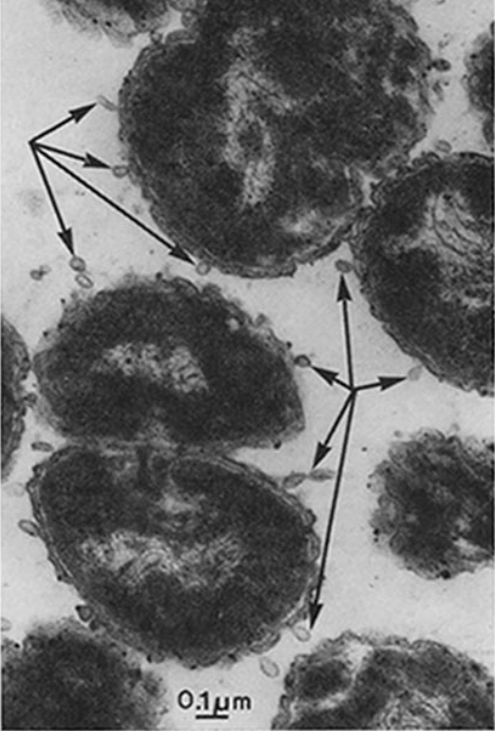15.1.3.3: Neisseria meningitidis
- Page ID
- 42665
\( \newcommand{\vecs}[1]{\overset { \scriptstyle \rightharpoonup} {\mathbf{#1}} } \) \( \newcommand{\vecd}[1]{\overset{-\!-\!\rightharpoonup}{\vphantom{a}\smash {#1}}} \)\(\newcommand{\id}{\mathrm{id}}\) \( \newcommand{\Span}{\mathrm{span}}\) \( \newcommand{\kernel}{\mathrm{null}\,}\) \( \newcommand{\range}{\mathrm{range}\,}\) \( \newcommand{\RealPart}{\mathrm{Re}}\) \( \newcommand{\ImaginaryPart}{\mathrm{Im}}\) \( \newcommand{\Argument}{\mathrm{Arg}}\) \( \newcommand{\norm}[1]{\| #1 \|}\) \( \newcommand{\inner}[2]{\langle #1, #2 \rangle}\) \( \newcommand{\Span}{\mathrm{span}}\) \(\newcommand{\id}{\mathrm{id}}\) \( \newcommand{\Span}{\mathrm{span}}\) \( \newcommand{\kernel}{\mathrm{null}\,}\) \( \newcommand{\range}{\mathrm{range}\,}\) \( \newcommand{\RealPart}{\mathrm{Re}}\) \( \newcommand{\ImaginaryPart}{\mathrm{Im}}\) \( \newcommand{\Argument}{\mathrm{Arg}}\) \( \newcommand{\norm}[1]{\| #1 \|}\) \( \newcommand{\inner}[2]{\langle #1, #2 \rangle}\) \( \newcommand{\Span}{\mathrm{span}}\)\(\newcommand{\AA}{\unicode[.8,0]{x212B}}\)

Organism
-
Commonly referred to as the meningococcus
-
Neisseria meningitidis is a Gram-negative diplococcus, typically flattened where the cocci meet.
-
Oxidase positive
- Aerobic
- There are 13 serogroups of meningococci. Serogroups B and C commonly cause meningitis and meningococcemia in developed countries; serogroups Y and W135 typically cause pneumonia.
Habitat
- Humans are the only natural host.
Source
- Transmitted person-to-person by aerosolized respiratory tract secretions.
Clinical Disease
- One of the three major causes of bacterial meningitis (the others being Strep. pneumoniae and Haemophilus influenzae)
- There are between 2000 and 3000 cases of meningococcal meningitis per year in the U.S. A total of 2725 cases were reported to CDC in 1998.
- N. meningitidis infects the nasopharynx of humans causing a usually mild or subclinical upper respiratory infection. However in about 15% of these individuals, the organism invades the blood and disseminates, causing septicemia (specifically meningococcemia) and from the there may cross the blood-brain barrier causing meningitis A petechial skin rash (purple splotches) (Figure \(\PageIndex{1}\)), caused by endotoxin in the blood, appears in about 75 percent of the septic cases and fatality rates for meningococcal septicemia (meningococcemia) are as high as 30 percent as a result of the shock cascade (endotoxic shock). A fulminating form of the disease, called Waterhouse-Frederichsen syndrome, can be fatal within several hours due to massive intravascular coagulation and resulting shock, probably a result of massive endotoxin release. N. meningitidis is especially dangerous in young children.
- Typical symptoms are headache, meningeal signs, and fever.
- Mortality is close to 100% if untreated; less than 10% with prompt and appropriate antibiotic therapy.
- Effective vaccines targeting the polysaccharide capsules of major pathogenic strains (serogroups) are available.
Figure \(\PageIndex{1}\): Petechiae (1-2 mm) and purpura (3-10 mm) are caused by minor bleeding of capillaries (2010;
Primary Virulence Factors
- Polysaccharide capsule prevents phagocytosis
- Fimbriae allow adherence to tissues
- Endotoxin. N. meningitidis displays an unusual behavior called "blebbing" (Figure \(\PageIndex{2}\)) in which bits of the outer membrane (containing LPS/endotoxin) are released from the cell while it is alive (in most cases LPS is only released when a cell lyses). This results in the extreme inflammation and endotoxic shock associated with N. meningitidis.

From Meningococcal Infections, by Thomas A Hoffman, MD, Professor, Department of Internal Medicine, Division of Infectious Diseases, Jackson Memorial Hospital, University of Miami.

